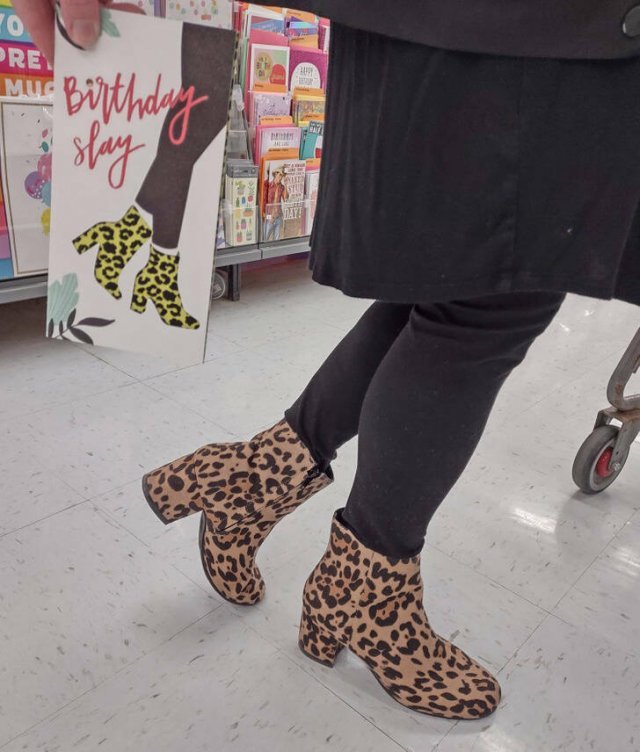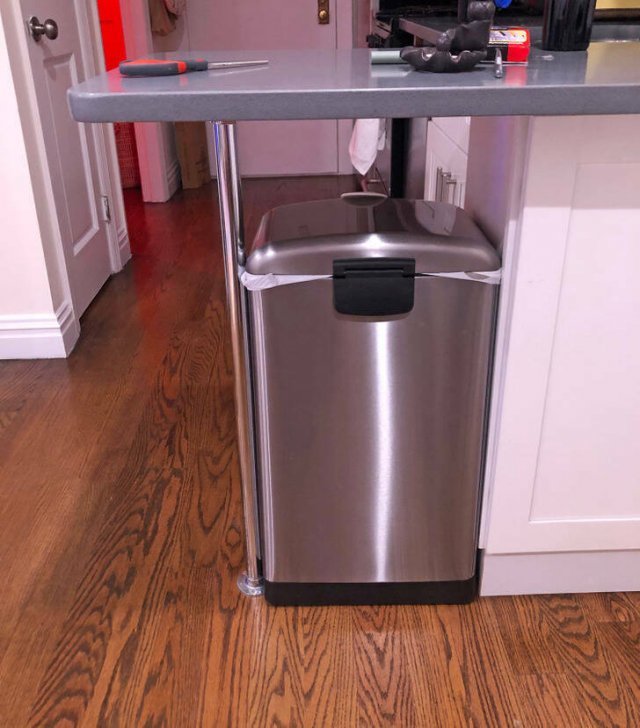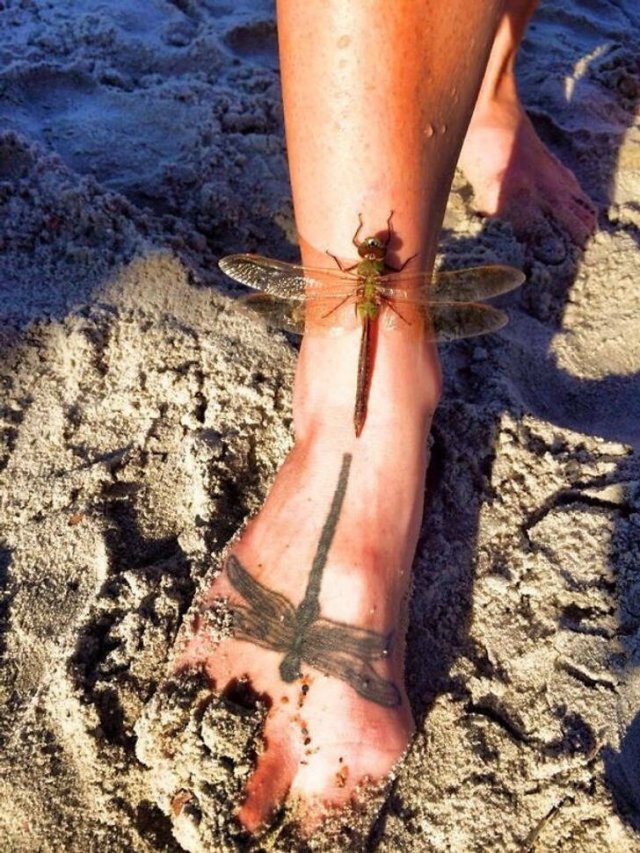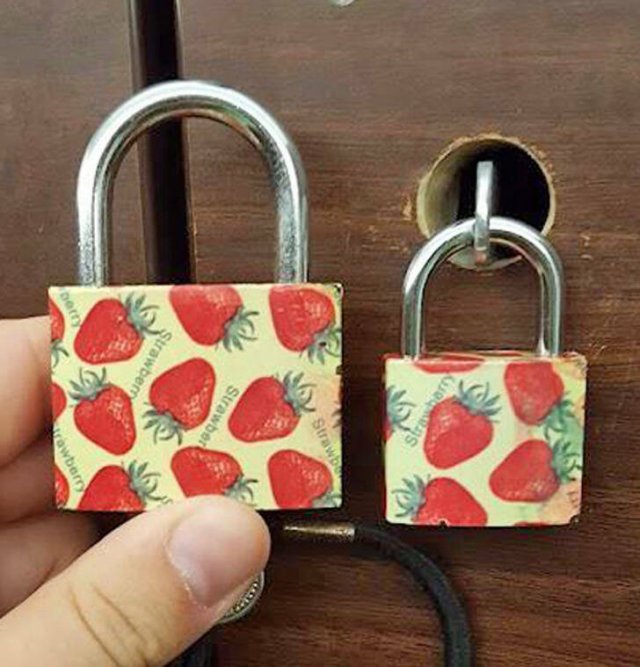The newest registered user is Menupanda
Our users have posted a total of 44880 messages in 6612 subjects

WORLD CLOCK
INFORMATION VINE * The History of The Dust Bowl In America *.
Valley of the Sun Casual Club :: WORDS , FACTS , DATES , GAMES & TRIVIA & HISTORY :: INFORMATION VINE
 INFORMATION VINE * The History of The Dust Bowl In America *.
INFORMATION VINE * The History of The Dust Bowl In America *.

Photo Courtesy: [UniversalImagesGroup/Contributor/Getty Images]
Not many people are familiar with the Dust Bowl, mainly because it was overshadowed and blended in with The Great Depression. However, make no mistake about it, the Dust Bowl had a massive effect on the United States and was even a major factor that lead to The Great Depression. If you want to learn more about this environmental plague, check out this gallery to find out all you need to know about it.
The Dust Bowl was caused by humans
In the late nineteenth and early twentieth centuries, there was intensive farming on the Great Plains in order to meet the demands of a growing population. However, the farming techniques used were not particularly sustainable.

Photo Courtesy: [Historical/Contributor/Getty Images]
The land was overcultivated with heavy use of tractors and as a result, the topsoil was loosened. When a severe drought hit the Great Plains during the 1930s, that topsoil was picked up by winds, causing the dust storms that gave the Dust Bowl its name.
The Dust Bowl era was also known as the “Dirty Thirties”
The 1930s were a decade that does not usually inspire happy thoughts for most people. The Great Depression caused as much as 25% of industrial workers in the United States to become unemployed. The Great Depression also led to global trade grinding to a halt, which made it last even longer.

Photo Courtesy: [Irving Browning/The New York Historical Society/Getty Images]
The economic effects of the Great Depression also had political effects, leading to the rise of fascism. The Dust Bowl that coincided with the Great Depression also was known as the “Dirty Thirties”.
A reporter coined the term “Dust Bowl”
Not surprisingly, the Dust Bowl was a media event that attracted journalists from all over the United States to cover the dust storms in the Great Plains. On April 14, 1935, Robert Geiger, a reporter for the Associated Press, was in Boise City, Oklahoma.

Photo Courtesy: [Historical/Contributor/Getty Images]
There he witnessed the black dust storms that had plagued the Great Plains. He described these storms as a dust bowl in the middle of North America. The name was also adopted by other news organizations and had entered the history books.
The Dust Bowl happened at the same time as the Great Depression
The Great Depression was a severe economic slowdown that was precipitated by the Stock Market Crash in 1929. In the months and years that followed, the economy shrank, since there was little demand for consumer products, resulting in massive unemployment, not just in the United States but throughout the world.

Photo Courtesy: [Irving Browning/The New York Historical Society/Getty Images]
This was the same time as the Dust Bowl when a severe drought caused catastrophic dust storms in the Great Plains, which displaced hundreds of thousands of people in the United States.
Californians were afraid of immigrants
The Dust Bowl led to massive migration from the states like Oklahoma, Texas, Missouri, Iowa, Nebraska, Kansas, Colorado, New Mexico, and Arkansas. In just one year, more than 86,000 people entered California.

Photo Courtesy: [Bettmann/Contributor/Getty Images]
During the 1930s, around 116,000 families moved into California, and that prompted anti-immigration fears among Californians. In reaction to the mass exodus of people displaced by the Dust Storm, the authorities blocked roads leading to California. When fires broke out in migrant camps, they were also reported to the police.
People killed snakes to fight drought
The severity of the droughts and dust storms drove some farmers to desperation. They resorted to methods that did not exactly meet the definition of the scientific method. One way people found to fight the drought was to catch a snake.

Photo Courtesy: [Universal History Archive/Universal Images Group/Getty Images]
After catching the snake, they would kill it and hang it by its belly. The belief was that hanging a snake on a fence post on its belly would lead to rain the next day, the drought lasted eight years.
A cow was $1
The Dust Bowl was part of a larger phenomenon in American history, known as the Great Depression. During the 1930s, there was a severe economic slowdown, resulting in massive unemployment. Since millions of people were unemployed, they often did not have money for food.

Photo Courtesy: [Universal History Archive/Universal Images Group/Getty Images]
In the Great Plains, a prolonged drought meant that there was little food. To try to remedy the effects of both the Dust Bowl and the Great Depression, the federal government purchased crops and livestock from severely impacted families, which included buying the family cow for $1 in order to feed other starving families.
Schools had to be closed
The Dust Bowl affected just about every part of life in the Great Plains. Not only was there a prolonged drought, which led to topsoil being blown away causing gigantic dust storms, but human activity was also disrupted.

Photo Courtesy: [Photo 12/Universal Images Group/Getty Images]
Schools had to be shut down because of the dust storms, making it very dangerous for schoolchildren to walk to school. The dust storms destroyed many school buildings, which meant that students had to be transferred to the remaining schools, adding to their families’ hardships.
There was a plague of rabbits
Normally, one doesn’t consider rabbits to be an existential threat. Because of the prolonged drought and the dust storms, much of the crops in the Midwest were destroyed. However, a few acres' worths of crops remained. That produced another problem because jackrabbits started eating much of the surviving crops.

Photo Courtesy: [Universal History Archive/Universal Images Group/Getty Images]
By 1935, there were 8 million jackrabbits reported in 30 counties in Kansas, alone. This prompted farmers to organize into groups to cull the millions of jackrabbits that had overrun remaining farmland. Local counties paid bounties for each jackrabbit killed.
Millions of people were displaced by the Dust Bowl
The Dust Bowl created one of the worst humanitarian disasters in American history. The Dust Bowl affected more than 2.5 million acres throughout the Great Plains during the 1930s. This resulted in a mass displacement of people from their homes to other parts of the country.

Photo Courtesy: [Universal History Archive/Universal Images Group/Getty Images]
More than 2.5 million people left their homes, farms, and businesses because life had become untenable. Many of them went to California in search of better economic opportunities. This exodus of people was recorded, not just in newspapers, but also in literature with novels like The Grapes of Wrath.
Paper was brought up as a solution to the Dust Bowl
The unprecedented nature of the Dust Bowl prompted people to come up with unorthodox ideas in order to solve the problems caused by the Dust Bowl. One solution was to cover millions of acres of farmland with waterproof paper. The theory was that waterproof paper contains PVC (polyvinylchloride).

Photo Courtesy: [Universal History Archive/Universal Images Group/Getty Images]
PVC would then conserve water and prevent it from being evaporated, which could potentially save crops. Not surprisingly, paper companies made this proposal, not out of pure altruism, but as an opportunity to receive contracts from the federal government.
The Dust Bowl returned in the 1950s
The drought that caused the Dust Bowl of the 1930s ended when the rains returned in 1940. There was also hope that new methods in agriculture would prevent the mistakes from recurring. However, during the 1950s, another drought affected the Great Plains.

Photo Courtesy: [Bettmann/Contributor/Getty Images]
Between 1950 and 1956, a wide area ranging from the Southwest to Oklahoma, Texas, and Nebraska was affected by drought. Similar conditions returned, as the winds picked up loose topsoil and became part of the dust storms, and dust had to be swept from the streets.
Pavement was proposed as a solution to the Dust Bowl
Another example of out-of-the-box thinking during the 1930s was to pave over the Great Plains. The reasoning was that pavement would prevent topsoil from being blown away, causing dust storms. Additionally, by paving over the Great Plains, water would also be conserved by preventing evaporation.

Photo Courtesy: [Universal History Archive/Contributor/Getty Images]
This was proposed by the Barber Asphalt Company in New Jersey, hoping to receive a contract from the federal government, charging five dollars per acre to pave over one hundred million acres of the entire Great Plains.
California became a major destination
The Dust Bowl prompted one of the greatest mass migrations within the United States. About 2.5 million people left the Great Plains during the Dust Bowl. About 300,000 of them came to California for better opportunities like working in the fields of the Central Valley.

Photo Courtesy: [Bettmann/Contributor/Getty Images]
The story of the Joad family who left Oklahoma for California in The Grapes of Wrath was based on similar journeys during the 1930s, as well as the reactions of Californians to the “Okies” who were dwelling among them.
Planting trees was one of the solutions for the Dust Bowl
After much study by the Soil Conservation Service, it was concluded that soil erosion due to decades of unsustainable farming techniques was the cause of the storms, which led to the Dust Bowl of the 1930s. The goal, then, was to prevent topsoil from being picked up by the wind in the future.

Photo Courtesy: [Historical/Contributor/Getty Images]
Under the Shelterbelt Project, trees would be planted to prevent wind erosion of the soil. The Shelterbelt Project started in 1935 and resulted in the planting of more than 220,000 trees along 18,600 square miles.
The Dust Bowl was a major blow to the US economy
While we often think of the Dust Bowl in geological or human terms, its effects can also be measured in economic terms. The Dust Bowl added to the economic misery of the Great Depression, which already wreaked havoc, in terms of industrial unemployment.

Photo Courtesy: [UPI/Bettmann Archive/Getty Images]
Additionally, because of the prolonged drought and the subsequent dust storms that destroyed farmland, farmers had no crops to sell to the market. That resulted in a loss of $25 million per day, which would be about $440 million in today’s money.
Dryland farming contributed to the Dust Bowl
During the decades before the Great Depression, farmers in the Great Plains adopted the technique of dryland farming to adapt to the dry weather and low precipitation. Dryland farming is a type of farming that taps into the moisture in the soil, particularly in places that have as little as 230 milliliters of rain per year.

Photo Courtesy: [Universal History Archive/Universal Images Group/Getty Images]
However, this method of farming leaves the soil susceptible to wind erosion. This contributed to the dust storms that would give the Dust Bowl its name.
Not all migrants from the Dust Bowl came from Oklahoma
Even with the human misery caused by the Dust Bowl, people still made time for xenophobia and stigmatization. When people started arriving in California from the Great Plains, they were given the blanket name of “Okies”, on the assumption that they came from Oklahoma and were migrant farmers.

Photo Courtesy: [Sepia Times/Universal Images Group/Getty Images]
However, the reality was that only 20% of migrants came from Oklahoma. Nevertheless, the name stuck and applied to anyone from the Great Plains. Local eating establishments put out signs saying that “Okies” and dogs were not welcome.
Last edited by Paul on Fri 12 Jan 2024, 8:27 am; edited 1 time in total
 Re: INFORMATION VINE * The History of The Dust Bowl In America *.
Re: INFORMATION VINE * The History of The Dust Bowl In America *.
Route 66 was a way out of the Dust Bowl
It was during the Great Depression that Route 66 was seared into the nation’s consciousness. Route 66 served as the route that families took to leave their drought-stricken states. Built in 1926, Route 66 starts in Chicago Illinois, then runs 2,448 miles through Missouri, Oklahoma, Texas, New Mexico, Arizona, and ends in Santa Monica, California.

Photo Courtesy: [ROBYN BECK/Staff/Getty Images]
For many families, it symbolized hope for a better life when they reached California. After 1956, Route 66 gradually fell to disuse after the creation of the interstate highway system.
Dorothea Lange’s photographs made the Dust Bowl real to Americans
During the 1930s, the federal government sent people to quantify the effects of the Great Depression and to see the ways people were affected, that cannot just be told by statistics. Dorothea Lange was a photographer hired by the Farm Security Administration to document the effects of the Great Depression in film.

Photo Courtesy: [Historical/Contributor/Getty Images]
She went out and took photographs of those most affected by the Dust Bowl, such as migrant farmers, women, and children. Those photographs have become part of the history of the United States.
Demand for wheat contributed to the Dust Bowl
During the late 19th and early 20th centuries, there was a great demand for wheat in Europe. The federal government encouraged settlers to move to Oklahoma with the promise of 640 acres of farmland. Because of the demand for wheat, prices soared, encouraging farmers to plant more wheat.

Photo Courtesy: [Carl Iwasaki/Contributor/Getty Images]
However, in the rush to meet global demands, farmers drained moisture from the soil, which made the topsoil loose. When the drought of the 1930s came, that topsoil was blown away creating dust storms and the Dust Bowl.
World War I contributed to the Dust Bowl
In the early 20th century, American farmers met the demand for wheat in Europe. That was due to the fact that World War I and the Russian Revolution were raging, meaning that only the United States could provide the wheat necessary since the countries at war could not export their wheat.

Photo Courtesy: [Ira Gay Sealy/The Denver Post/Getty Images]
After Turkey had cut off the wheat trade from Russia, the price of wheat rose. By the 1930s, there was an overproduction of wheat, which meant that the price of wheat fell, leaving farmers unable to earn a living.
The loss of grassland contributed to the Dust Bowl
In the early twentieth century, as industrial-scale farming was taking root, farmers drastically altered the ecological balance of the Great Plains. To clear ground for farming, farmers took out the deep-rooted grass that had been indigenous to the Great Plains, loosening the soil.

Photo Courtesy: [Charles Phelps Cushing/ClassicStock/Getty Images]
To meet worldwide demands, farmers planted three times more wheat by 1929 than in 1920. By the end of the 1920s, about 5.3 million acres of grassland turned into farmland, an area seven times the size of Rhode Island.
Soil has different colors based on their origin
The Dust Bowl created opportunities to expand scientific knowledge. Since there was so much dust being blown around, geologists and other scientists were collecting data on the origin of the soil.

Photo Courtesy: [Universal History Archive/Universal Images Group/Getty Images]
They were able to tell where the soil came from based on its color. For example, black soil came from Kansas, red soil came from Oklahoma, and gray soil came from Texas and New Mexico. This data later helped scientists in coming up with solutions to prevent future Dust Bowls.
The 1930s produced some depressing facts
It is often said that economics is the “dismal science”. The Great Depression and the Dust Bowl have data that are not exactly cheerful.

Photo Courtesy: [Bettmann/Contributor/Getty Images]
For example, during the 1930s, 250,000 boys and girls became homeless and wandered the country as hobos, one-third of farms were in foreclosure, and around 9,000 banks failed during the Depression. Also in 1932, at the worst of the depression, 1 out of 4 workers was unemployed, in Toledo, Ohio, 4 out of 5 workers had no jobs, and in 1933, 90% of the chickens in a Texas county died because of the dust storms.
The farmers from the Great Depression worked for very low wages
Today in our more comfortable society, it is not always easy to understand the difficulties that farmers endured during the Great Depression and the Dust Bowl era. For example, grape pickers in California worked sixteen hours per day, seven days a week for $4.

Photo Courtesy: [Universal History Archive/Universal Images Group/Getty Images]
Children also worked in the fields for less. The Works Progress Administration paid 18 cents an hour and the Civilian Conservation Corps paid 20 cents an hour, which is an improvement. Horses also were paid $1 per day.
The Dust Bowl inspired some interesting math
The Dust Bowl led to a lot of interesting calculations, to get an idea of the magnitude of the dust particles blown around during the 1930s, a Kansas State University Professor did some calculating.

Photo Courtesy: [Boyer/Roger Viollet/Getty Images]
He concluded that it would take a line of trucks 96 miles long hauling 10 full loads a day, one year to transport the soil that had flown from one end of Kansas to another. In all, it would take about 46 million truckloads of dirt.
People still had not learned their lesson from the 1930s
One would think that after such a traumatic and defining moment in American history as the Dust Bowl, that people would have learned their lesson and use more ecologically sustainable ways of farming.

Photo Courtesy: [Universal History Archive/Universal Images Group/Getty Images]
Despite the efforts of the federal government of planting 220 million trees to preserve farmland, by the 1940s, farmers went back to their old ways to meet high demands for wheat due to World War II. That meant cutting down the shelterbelt trees meant to stop the dust storms.
Crops and farm animals had to be destroyed as ordered by the federal government
During the presidency of Franklin Roosevelt, he created the New Deal, which tackled the Depression in counterintuitive ways. One way to approach the Depression was by creating “planned scarcity”. The idea was that since overproduction led to the drop in farm prices, fewer agricultural products on the market would raise prices, allowing farmers to earn a living.

Photo Courtesy: [Universal History Archive/Universal Images Group/Getty Images]
Farmers destroyed millions of acres of crops and around 6 million baby pigs and 200,000 cows were culled. That did not provide a positive image in the Dust Bowl states.
Big cities were also affected by the Dust Bowl
The Dust Bowl did not just affect farmers in the Great Plains. Metropolitan areas were also affected because of the soil carried by the dust storms. During the 1930s, 350 million tons of soil left Kansas, Texas, and Oklahoma and were blown east.

Photo Courtesy: [Bettmann/Contributor/Getty Images]
In one night, the city of Chicago received 12 million tons of soil, which roughly makes it 4 pounds of soil per person. So much soil was blown to New York and Boston that lamps had to be lit in the daylight.
The Dust Bowl blew a lot of soil
To say that the Dust Bowl was an epic event in history would be an understatement. The amount of topsoil that was blown away by the dust storms is quite astronomical to think about. Nevertheless, scientists were able to quantify its effects.

Photo Courtesy: [Historical/Contributor/Getty Images]
By 1935, more than 850 million tons of topsoil was blown away from the southern Great Plains. That is roughly 8 tons of dirt for every American. In the Dust Bowl states, farmers lost 480 tons of topsoil per acre.
Canada was also affected by the Dust Bowl
Many people often think of the Great Depression and the Dust Bowl as purely American events. However, the Great Depression was a worldwide event that drove global trade to a halt, unleashing even higher unemployment levels than in the United States, and had more ominous political effects.

Photo Courtesy: [Universal History Archive/Universal Images Group/Getty Images]
The Dust Bowl also went beyond the United States and also affected Canada. During the 1930s, 25% of the population of Canada’s Prairie Provinces also left their farms because of the dust storms.
The federal government hired people to clean up from the dust storms
Even though the Great Depression and the Dust Bowl created massive unemployment, they also provided opportunities for employment by the government.

Photo Courtesy: [Universal History Archive/Universal Images Group/Getty Images]
As part of the New Deal, the federal government started hiring large numbers of people to stimulate the economy because they will eventually have to spend that money, which would cause businesses to hire people to meet the demand. The Works Progress Administration (WPA) hired migrant farmers and unemployed factory workers to pave dirt roads, build bridges, and build schools.
People had to wear masks during the Dust Bowl
By 1935, the dust storms in the Dust Bowl had become a humanitarian disaster of epic proportions. The Red Cross was sent to establish six emergency hospitals in the states that were affected by the Dust Bowl.

Photo Courtesy: [Bert Garai/Keystone/Hulton Archive/Getty Images]
Additionally, Red Cross volunteers distributed 17,000 gauze masks to prevent outbreaks of pneumonia caused by dust particles. Red Cross doctors and nurses visited hundreds of homes to check up on people who had gotten sick from the dust filling up in their lungs.
Migrant farmers who arrived in California lived in “Hoovervilles”
When migrants from the Great Plains arrived in California, they did not always receive the welcome they expected. They often lived in encampments that evolved into shantytowns known as “Hoovervilles.”

Photo Courtesy: [Photo12/Universal Images Group/Getty Images]
They were called Hoovervilles because they were named after President Herbert Hoover, who was the president in the early years of the Great Depression. He was blamed for the Great Depression for his seeming lack of care for the suffering many Americans had undergone, even though he had little to do with the causes of the Great Depression.
One dust storm interrupted Congress
It is not very often that a natural disaster interrupts a session of Congress. On May 11, 1934, a dust storm had reached the Atlantic coast, it measured two miles high, and traveled 2,000 miles. This dust storm swirled around Washington, DC, and covered national landmarks such as the Washington Monument.

Photo Courtesy: [Library of Congress/Stringer/Getty Images]
In the US Capitol, members of Congress were debating on a soil conservation bill when they were interrupted by the dust storm. In other parts of the East Coast, housewives had to keep out the dust from their homes.
The worst dust storm took place in 1935
The Dust Bowl became a reality for Americans in other parts of the country in 1935. On April 14, 1935, the worst dust storm had hit, which was known as Black Sunday. On that day, several cities were blackened by the dust storms that stretched from the Atlantic coast to 200 miles inland.

Photo Courtesy: [Library of Congress/Stringer/Getty Images]
This had such an effect on people that they thought that the world was coming to an end. In one instance a mother killed her own child so that the baby would not have to experience the end of the world.
The New Deal helped address some of the issues from the Dust Bowl
When Franklin Roosevelt was elected president in 1932, he swore to the people that he would not just sit back and let the market resolve itself during the early years of the Great Depression, as his predecessor, Herbert Hoover, had done. The New Deal meant that the federal government would play a more active role in the economy and in people’s lives.

Photo Courtesy: [Bettmann/Contributor/Getty Images]
The creation of the Agricultural Adjustment Act, the Civilian Conservation Corps, the Rural Electrification Act and the Soil Conservation Service stepped in to find solutions to the problems caused by the Dust Bowl.
Birth rates dropped during the Dust Bowl era
Economic depressions and natural disasters are not usually the best times to plan to have a family. During the 1920s, the birth rate for the United States dropped below 200 children per 1,000 women.

Photo Courtesy: [Universal History Archive/Universal Images Group/Getty Images]
During this period, just being able to survive and to put food on the table was a priority for many Americans. People were not likely to consider having children when they could lose their jobs, farms, homes, or even their health because of the raging dust storms.
The Dust Bowl led to blue flames
The Dust Bowl also created some interesting scientific phenomena. Due to the dust storms, there was a lot of static electricity that was accumulating because of the friction generated by the dust particles bumping into one another at high velocities.

Photo Courtesy: [Photo12/Universal Images Group/Getty Images]
This resulted in creating blue flames that sparked when these dust particles also bumped against metal like barbed wire or cars. As a result, cars had to be chained to the earth, creating ground in order to prevent electrocution.
Rainmakers were in demand
The Dust Bowl was an opportunity for entrepreneurial people to use unorthodox methods to bring rain to the Great Plains during the 1930s, which reflected their growing desperation, which ranged from rain dancing to praying.

Photo Courtesy: [Universal History Archive/Universal Images Group/Getty Images]
One such rainmaker named Tex Thornton proposed firing rockets with explosives into the sky in order to generate rain. The rainmaker, however, was unsuccessful. Eventually, with the advent of modern meteorology and more accurate predictions in weather, the services of rainmakers were no longer necessary.
The Dust Bowl expanded the federal government
The Dust Bowl occurred in the middle of an experiment in governing, known as the New Deal. The New Deal was the umbrella term for the new agencies that came out of President Franklin Delano Roosevelt’s vision of an active federal government meeting the needs of the people.

Photo Courtesy: [Photo 12/Universal Images Group/Getty Images]
Because of the unprecedented nature of the Dust Bowl, the Soil Conservation Service was created in 1935 to study the causes of the Dust Bowl and to prevent it from occurring in the future. Washington D.C. Secretary of Agriculture Henry Wallace (left) appointed Roy I. Kimmel (middle), of Amarillo, Texas to coordinate a broad federal program to rehabilitate the soil conservation.
The Dust Bowl had other names
The dust storms that gripped the states of the Great Plains were quite unprecedented, and people throughout the country struggled to make sense of them, including what to call them. Robert Geiger, a reporter for the Associated Press, was the first to call the states affected by the dust storms the Dust Bowl.

Photo Courtesy: [PhotoQuest/Contributor/Getty Images]
However, he also called those states the Dust Belt, similar to the “Bible Belt” of predominantly evangelical Christian states. However, the Dust Bowl was more memorable and, as such, has been recorded in history.
Most people braved out the Dust Bowl
The Dust Bowl is often remembered in terms of the 2.5 million people who left afflicted states, especially Oklahoma, Arkansas, and Texas to start a new life in places like California. However, what is more remarkable is that many more people stayed.

Photo Courtesy: [Bettmann/Contributor/Getty Images]
About 75% of the people in the areas affected by the Dust Bowl remained. That speaks to the heroic resilience of the people of the Great Plains, who were able to weather out the biblically-proportioned dust storms of the 1930s.
The Dust Bowl also produced a plague of grasshoppers
As if the prolonged drought and dust storms were not enough, grasshoppers were another challenge during the 1930s. In 1931, there were swarms of grasshoppers that devastated crops in Iowa, Nebraska, and South Dakota. Local accounts reported swarms of grasshoppers so thick that they blotted out the sun.

Photo Courtesy: [Hulton Archive/Stringer/Getty Images]
Entire cornfields were stripped bare by the swarms of grasshoppers that ate everything in their path. They were also reported to even eating the clothes off farmers because they were attracted to the salt in their perspiration.
There were 30 dust storms in 1933
The year 1933 was a bad year, it was the worst year of the Great Depression. It was also the worst year of the Dust Bowl. In 1933, alone, there were 30 dust storms that swept across the Great Plains, one effect of having so many dust storms was that driving was restricted.

Photo Courtesy: [Historical/Contributor/Getty Images]
People could not drive anywhere they wanted because there was the risk that dust storms could take place at any time. When they did strike, people's vision became extremely limited, and drivers would have to stop immediately.
The Dust Bowl took the lives of many people
The Dust Bowl had physical, as well as economic effects. The Dust Bowl was a major health crisis that caught the nation’s attention. The topsoil that was blown away became part of the windstorms that blew across the Great Plains and into people’s lungs.

Photo Courtesy: [Bettmann/Contributor/Getty Images]
The result was that people died from dust pneumonia, as their lungs were choked with dust. Also, because there were no crops due to the drought precipitating the dust storms, malnutrition was also a problem.
The Dust Bowl covered millions of acres
It is almost hard to fathom the magnitude of the Dust Bowl. The Dust Bowl affected parts of eastern Colorado, southern Nebraska, western Kansas, western Oklahoma, and northwestern Texas. In all, the Dust Bowl impacted a total of 100 million acres or 400,000 square kilometers.

Photo Courtesy: [Historical/Contributor/Getty Images]
The Dust Bowl also had a human toll on the people who were displaced and the people who died from the effects of dust storms. The Dust Bowl has since entered the consciousness of the nation and has been associated with the Great Depression.
The federal government converted abandoned farmland into grassland
In addition to the Great Depression and the Dust Bowl, the 1930s was also a decade of creative thinking. When Franklin Roosevelt was elected president in 1932, he announced that he was open to new ideas and innovation, which became the New Deal.

Photo Courtesy: [Smith Collection/Gado/Getty Images]
Part of that innovation was applied to solving the Dust Bowl. The federal government purchased farmland that had been eroded and turned it into grassland in order to hold the soil so that there would not be any repeat of the Dust Bowl.
 Similar topics
Similar topics» INFORMATION VINE * The History of Transportation*.
» INFORMATION VINE * The History of Legos *
» INFORMATION VINE * The History of Prince *.
» INFORMATION VINE * The History of Baseball *.
Valley of the Sun Casual Club :: WORDS , FACTS , DATES , GAMES & TRIVIA & HISTORY :: INFORMATION VINE

 Events
Events















































































» YOU TUBE SHORTS DANCE ONLY...2
» AWESOME SPORTS GIF's...7
» YOUTUBE SHORTS WWE...22
» BRIGHT SIDE...3
» WWE WHO's WHO ?
» YOUTUBE SHORTS WWE...21
» US TRIVIA QUIZ * What cut of meat is often considered the "National Dish of Texas"? *
» US TRIVIA ANSWER PAGE
» QUIZ DAILY QUIZ * Who said, “Government of the people, by the people, for the people”? *
» QUIZ DAILY ANSWER PAGE
» Word Genius Word of the day * fulcrum *
» MAY NATIONAL CELEBRATION DAYS MAY 9 2024
» BEFORE & AFTER...2
» COSPLAY...2